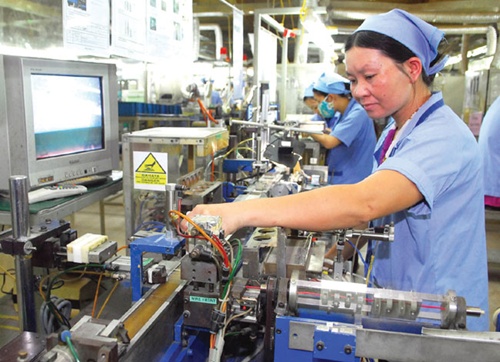Domestic demand drives slow growth
Domestic demand drives slow growth
Viet Nam's growth, though not stellar, is continuing, as latest high-frequency indicators suggest domestic demand is rebounding, albeit at a gradual pace, according to HSBC's Asian Economics quarterly report released late last week.

According to the report, retail sales expanded 13 per cent year-on-year in February, driven by services and tourism, marking a 11.4 per cent increase. Also, imports surged, rising 20.7 per cent over the beginning of the year.
Most of the increase was due to higher input imports, suggesting that exports will increase in the months ahead. While exports expanded modestly, at 7.6 per cent over the same period last year, the rate of increase would be positive, overall, considering the downturn of the commodity cycle.
With the exception of cashew nuts and tea, however, all commodity exports contracted. What is maintaining the trade figures is Viet Nam's rising competitiveness in labour-intensive manufacturing, noting that textiles, footwear, electronics and phones all rose sharply. Further, the bank expected that output would continue to expand in the months ahead.
The February PMI mirrors this rising output, despite a decline in new export orders. In spite of slowing global demand, the country's exports were expected to rise, thanks to a steady increase of FDI inflows. Domestic demand will also likely stage a modest recovery.
After a sharp deceleration in 2011, domestic demand has gradually improved, though it remains weak. The drop in oil prices will likely boost consumer purchasing power, both directly, due to lower oil and transportation costs, and indirectly, as producers pass on savings to consumers by lowering output prices. Gradually rising income is another reason for improving consumer demand. HSBC forecast private consumption to accelerate to 5.6 per cent in 2015, from 5.4 per cent in 2014.
Viet Nam remains a net importer of petroleum, with the decline in oil prices bolstering its trade position. It is also trade-intensive, especially the non-oil trade, which means that producers and exporters will benefit from lower input costs. Low inflation will additionally give the government space to raise social service costs, as well as electricity prices. The SBV would further be tempted to cut the open market operation (OMO) rate by 50bp to 4.5 per cent.




















